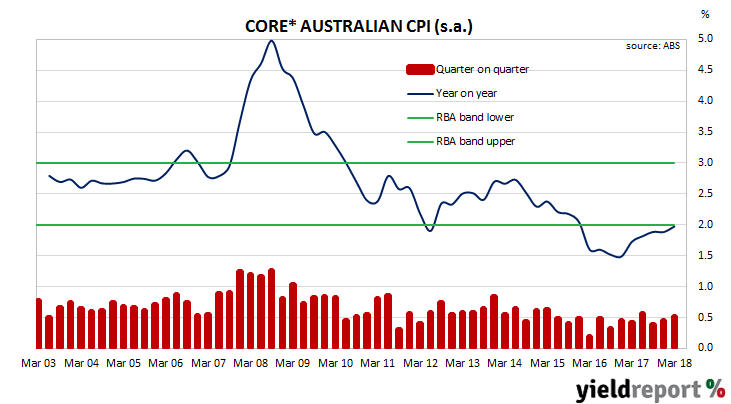For the greater part of the last two decades, inflation rates in advanced economies have been low. Up until around the start of this decade, low inflation had been viewed as a positive. High inflation in the 1970s and early 1980s was thought responsible for distorting investment decisions and it had been accompanied by economic stagnation in western countries. Once the back of inflation had been broken in the US in the early 1980s and in Australia in the early 1990s, locking in low inflation rates was a goal of central banks around the world. However, since 2009, central banks in advanced economies have regularly pointed to low inflation rates as a reason for continuing ultra-low interest rate policies.
Figures for the March quarter have now been released by the ABS. The headline number was weaker than the expected 0.5% but seasonally-adjusted and core inflation figures were in line with expectations.
Unadjusted inflation was 0.4% for the quarter while seasonally-adjusted inflation produced a 0.5% reading. On a 12-month basis, headline consumer inflation recorded 1.9%, the same as in the December quarter, while the seasonally-adjusted rate dropped back from 2.0% to 1.9%. *average of Trimmed Mean & Weighted Median
*average of Trimmed Mean & Weighted Median
Financial markets reacted by sending yields and the Aussie dollar lower. 3 year and 10 year bond yields each fell a couple of basis points immediately after the report was released and largely remained there until the close of business. 3 year bond yields finished 3bps lower at 2.18% while 10 year yields fell 3bps to 2.86%. The local currency bobbed up and down before settling around 76 US cents. Contracts in the futures markets implied a slight reduction of the chances of the RBA raising the cash rate in any given month through 2018 and 2019.
“Core” inflation measures favoured by the RBA, such as the average of the “trimmed mean” and the “weighted median”, remained unchanged on a quarterly basis but increased on an annual basis. The average of the two measures was in line with the market’s expected figures of 0.5% for the quarter and 2.0% for the year.

